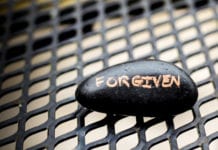Last week I wrote about the 4 stages people go through as they become more generous (you can read that post here). I also noted how the local church is uniquely positioned to help people move through all four stages. Other organizations can help people move through some of the stages, but I believe only the Church can help with all four. So the question is, how do we as church leaders guide people through these four stages?
Stage 1 – Giving Is A Duty. Since this stage is painful for people, it is important that we are sensitive to their pain while helping them move beyond it. Think of it like a patient being given a lung cancer diagnosis. The doctor would not beat up the patient or make the patient feel guilty by saying, “If you hadn’t smoked for the last 20 years, you wouldn’t be in this boat.” Instead, the doctor would be frank, but comforting. The doctor might say something more like this: ”There’s hope. We can treat the cancer, and I believe there’s a good chance we can beat it. You’re going to have to go through with every step of the treatment and you have to stop smoking.” See the difference? When communicating to people that they should give, make it clear that selfishness is a cancer, but generosity in Christ is the cure. Never make people feel guilty.
The key here is to communicate vision and hope. For example, rather than preaching a message entitled “The problems of being selfish” we should flip it around and preach one entitled “The benefits of generosity.” Helping people see giving as something other than a burdensome duty requires painting a beautiful picture of what can happen in their lives when they become more generous. The overall message should empower people by communicating that Christ wants more FOR them, rather than Christ wanting more FROM them.
One way that we communicate a generous vision to people is by giving them a booklet and a hand-written note when they give to our church for the first time. It’s called “What happens when you give.” I wish we could take credit for this idea, but we can’t. We purchase these books from Giving Rocket. You can find out more about these books here .
.
Stage 2 – Giving Is A Priority. Once a person decides they no longer want to be selfish with their finances, they’ve taken a huge spiritual step. At this point we, as church leaders, must empower our people by giving them the tools to make giving a priority.
When I was growing up in a Southern Baptist church, we were sent offering envelopes in the mail. This system reminded our family to make giving a priority. Thanks to internet technology we can do far better than mailing a box of envelopes. Creating a link on your website where people can set up automatic ACH withdrawals or recurring credit/debit card payments is a simple way to do this. Additionally, including a link in your weekly e-newsletter that simply says “give online” will remind people to give even when they’re on vacation or just missed church.
It’s vital that we not only help people believe that giving is a priority, we must help them make it a priority by providing them the right tools.
Stage 3 – Giving Is A Habit. This stage is both fantastic and dangerous. It’s fantastic because giving has become automatic for people. It’s dangerous because people can give without thinking. This can lead to either complacency or a sense of arrival. We must help people move beyond this stage by teaching about giving as an act of worship. We should continually remind those we lead that giving is not a mindless activity, it is a meaningful gesture of worship.
Stage 4 – Giving Is A Privilege. There are two methods that are helpful here: personal stories and personal example. Personal stories of changed lives are a great way to promote the privilege of giving. When people hear how our churches are impacting others, they are inspired to give. Playing these videos during weekend services, including them with contribution statements, and featuring them on our website reminds people why they give.
While stories of changed lives are powerful, the greatest way for church leaders to help people get to the fourth stage of generosity is to live in this place ourselves. The only way for us to convincingly talk about giving being a privilege is if we personally believe it. Evaluate yourself, church leader, are you giving consistently? Are you giving sacrificially? Are you seeing God’s miracles of provision that make you fall to your knees in worship? Only when we inhabit this space will we be able to help lead people here as well.










